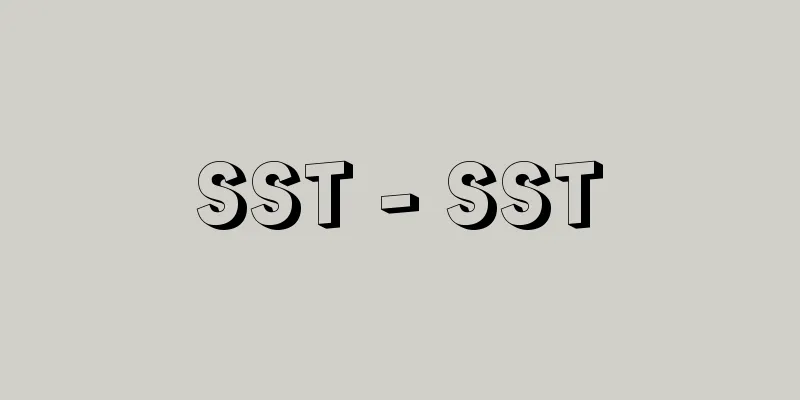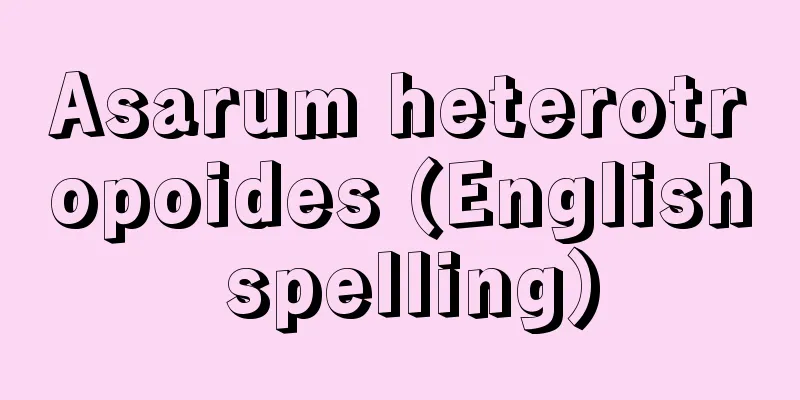Ashio Copper Mine Poisoning Incident

|
The pollution incident caused by mineral poisoning at the Ashio Copper Mine of the Furukawa Mining Co., Ltd. is a well-known incident that has long been a problem in the history of pollution in Japan. First, the amount of copper refined increased rapidly, and sulfur dioxide gas, a waste gas from the refinery, destroyed the forests around the copper mine, which caused the Watarase River, whose source is near the mine, to flood. In addition, refinery waste flowed into the river, destroying it. This led to damage to the crops in the river basin that use the river water. These damages became noticeable from around 1890, when a large number of fish appeared in the river, and the damage to crops led the residents in the river basin to launch an anti-mineral poisoning movement. Tanaka Shozo, a local member of the House of Representatives, became the center of this movement, and in 1891 he raised the issue on the podium of the Imperial Diet, and on December 10, 1901, he appealed directly to Emperor Meiji in front of the Diet. In the end, the authorities demolished Yanaka Village in Shimotsuga County, Tochigi Prefecture in June 1907, submerging the entire area and creating a reservoir to settle the situation for the time being, in an attempt to settle the movement. As a result, the river basin continued to be exposed to mine poisoning even after the anti-mineral poisoning movement had subsided. In March 1972, after World War II, residents of the Morita district of Ota City, Gunma Prefecture applied to the Pollution Adjustment Commission for arbitration regarding the mine poisoning damage that had accumulated since the Meiji era, and asked for compensation for the damage that had been caused over the years. In response, in May 1974, the Commission presented a proposal for arbitration ordering Furukawa Mining to pay a total of 1.55 billion yen in compensation. Both the residents and the mining company accepted this proposal, and on May 10 of the same year, an arbitration document was signed. Source: Encyclopaedia Britannica Concise Encyclopedia About Encyclopaedia Britannica Concise Encyclopedia Information |
|
古河鉱業足尾銅山の鉱毒による公害事件。日本の公害史上,古くから問題になり,またよく知られた事件である。まず銅精錬量が急増し,精錬の廃ガスである亜硫酸ガスにより,銅山周辺の山林が荒廃,それに原因して,同鉱山周辺を水源地とする渡良瀬川が氾濫。また,精錬廃棄物が同河川に流入し,同河川が荒廃した。そして同河川水を利水している流域農作物へ被害をもたらすにいたった。これらの被害は 1890年頃より,同河川魚の大量浮上などで目にとまるようになり,農作物への加害で流域周辺住民を鉱毒反対運動に立上がらせることとなった。地元選出衆議院議員の田中正造はその運動の中心となり,91年,この問題を帝国議会壇上で取上げ,また 1901年 12月 10日には明治天皇に議院前で直訴するなどした。結局,当局者は 07年6月,栃木県下都賀郡谷中村を取りこわし,同村地域一帯を水没させ,調整池とすることで当面の解決と運動の鎮圧をはかった。このため,同河川流域は鉱毒反対運動の鎮静後も引続き鉱毒にさらされ続けていくことになった。第2次世界大戦後の 72年3月,群馬県太田市毛里田地区の住民らは,明治以降の累積した鉱毒被害補償の調停を公害等調整委員会に申請,積年の損害補償を求めた。これに対して,同委員会は 74年5月,総額 15億 5000万円の補償を古河鉱業に命じる調停案を提示し,住民側,同鉱業双方がこれを受入れ,同年5月 10日調停書に調印した。
出典 ブリタニカ国際大百科事典 小項目事典ブリタニカ国際大百科事典 小項目事典について 情報 |
<<: Ashio Mountains - Ashiosanchi
Recommend
Iron sulfide - Iron sulfide
A sulfide ore of iron. In Japan, pyrite (FeS 2 ) ...
Response - Ousou
…There are two types of death penalty that the pr...
Umashimaji no Mikoto - Umashimaji no Mikoto
...In the Imperial Palace, a memorial service for...
Oswald von Wolkenstein
1377?-1445 A poet and composer from the German-spe...
Hattori Nakatsune - Hattori Nakatsune
Year of death: March 14, 1824 (April 13, 1824) Yea...
proportional navigation
…(c) Pure pursuit course, which always points to ...
Nogami [Town] - Nogami
This is an old town in Kaiso District, located in ...
San Remo (English spelling)
A city in the province of Imperia in the Liguria r...
Amiot, JJM (English spelling) AmiotJJM
…But the background to this was the existence of ...
Emphysematous cyst - emphysematous cyst
…These include the internal bullae, the subpleura...
Gaius Octavius
…reigned 27 BC to AD 14. Born to Caesar's nie...
Laying on of hands - Anshuurei
In the Christian church, a ritual of consecration ...
Sintra (English spelling)
A town in the Lisbon district in the mid-west of P...
Psychogenic reaction - shininhannou
A type of neurosis. An abnormal mental reaction ca...
Axon reflex
Also called pseudoreflex. In the peripheral nervou...









